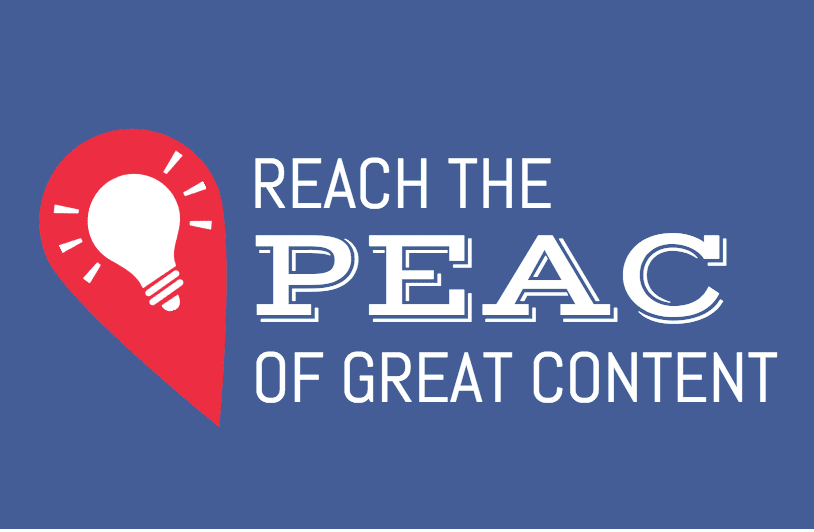Holiday-themed content can help companies gain traction with their audience by giving them helpful, relevant material. Here are six ways to make the most of holiday content marketing opportunities this year.
1. Capitalize on People’s Need for Convenience
The holidays can be a crazy time for everyone, and even the most well-organized people usually appreciate tips to help them get things done faster. That’s why Talbots recently partnered with 72-year-old TikTok sensation Barbara Costello.
During her 18 months on the social media app, the resourceful woman taught people life hacks ranging from cleaning Crocs in the dishwasher to baking blueberry muffins with only three ingredients.
Soon, Costello will be the face of two new Talbots campaigns — one about the brand’s Black Friday collection and another discussing the ease of the company’s curbside pickup program. The TikTok star kicked off the holiday season by suggesting a make-ahead appetizer that stays ready to eat for three months if frozen.
Marketers can take a similar approach by thinking about which aspects of holidays typically cause the most stress or uncertainty. From there, they can develop quick tips to reduce or eliminate those pressures and help people learn new things that come in handy before, during and after much-anticipated days of the year.
One possibility is to offer a new tip every day or week and post it on a company’s social media feeds. That way, people get in the habit of expecting new content. Plus, distributing the material on social media encourages followers to share it with people they know.
2. Offer Personalized Gift Recommendations
Many brands are fully on board with chatbots. Marriott even launched one to advise people about available careers and job openings.
Holiday content strategies often involve publishing gift guides. There’s nothing wrong with that approach, although it assumes people already have a general idea of what they want to buy.
Another option is to use a chatbot to customize a person's recommendations while they shop for holiday gifts. Amika, which sells hair products, once primarily used chatbots to enrich the after-purchase experience. However, the company recently changed its approach with a chatbot called Ace.
It asks people approximately 15 questions about their hair type and goals before providing two to five product recommendations. Shoppers also get the opportunity to receive a coupon for 15% off by signing up for Amika’s newsletter. Marketers could mimic this technique with any products that come in several versions or cater to specific needs.
As of July 2020, the company said that more than 22,000 people had completed the questionnaire and that it has about a 57% completion rate. Andy Mauro, CEO and founder of Automat, which developed the chatbot for Amika, provided some insight into why it worked so well. “This conversational technology has almost always been used for [replacing human] customer service, which most people don’t like. But for somebody in their shopping journey, a chatbot is giving them something that they were not expecting.”
3. Encourage People to Go on Location-Based Adventures
People often travel during the holidays, and themed content can encourage them to get to know an area in new ways or set off on surprising journeys.
For example, one company appealed to people’s love for frights during Halloween. It created a color-coded map to help them find haunted places. Users could get details about the types of ghosts found in certain areas, plus other specifics about what makes a place so scary.
An alternative might be to create a map of places that celebrate Christmas all year. Not surprisingly, Christmas, Florida, is one such destination. It keeps decorations up all year for people to enjoy.
Consider creating a map of the top places to go for people who celebrate Hanukkah, too. For example, Boston and Atlanta are two cities that traditionally have themed gatherings, including lighting ceremonies for giant menorahs.
Everything from heavy traffic to COVID-related concerns could cause people to decide they don’t want to travel as far this year as they have in the past. However, creating maps like those suggested here helps people become more familiar with places closer to them. Then, they’ll see how easy it is to have fun without necessarily embarking on major trips.
4. Appeal to the Audience’s Softer Side
Many holidays urge people to reflect on everything they have and realize that others find themselves in continually challenging circumstances. That’s why it’s worth exploring how a holiday campaign plan could tug on someone’s heartstrings and get them invested in other people’s stories.
In 2020, Boston’s Pizza Restaurant and Sports launched a nationwide dine-to-donate event on Veterans Day. The brand donated a portion of its profits to a company that grants wishes to military service personnel and helps them get home to their families during the holidays.
No matter which causes a content campaign highlights, statistics can catch people’s attention and help them recognize the severity of a targeted issue. For example, a company might say that a certain percentage of people in a city experience homelessness and have nowhere to go for Thanksgiving dinner.
Clarifying what people can do to help is an excellent way to get them interested. Many individuals feel concerned about the difficulties others experience in today’s society, but they feel powerless in positively influencing them. Letting them know how easy it is to get involved is a great way to turn helplessness into empowerment.
5. Help People Focus on Togetherness and Diversity
Many enduring holiday traditions are no longer must-have parts of celebrations. For example, as more people limit meat in their diets or cut it out, some will prefer turkey alternatives at Thanksgiving. Similarly, people may favor friends over family members as they send out invites.
Fetzer is a California wine brand encouraging people to realize that holiday traditions are more varied now than in past generations. It’s doing that through its “Here’s to #Friendsgiving” campaign, which includes social media content, digital ads, a sweepstakes contest and more.
Hillary Butler, Fetzer’s senior brand manager, explained, “Our inherent drive to connect can’t be confined to a particular definition of tradition. Even during a time of significant change like this year, connection — and the ways we create it — is the great equalizer and ties us all together. This campaign looks to celebrate that and is part of the long history of tradition around the table that Fetzer stands for, seen in a new light.”
People may understandably feel left out if they don’t conform to certain holiday norms. However, a content campaign is a fantastic way to remind everyone that traditions are getting more diverse, and that’s a beautiful thing. Consider asking people to briefly describe how they mark a holiday in their homes to get a wide assortment of input that could become a fascinating piece of content.
6. Give Inspiration Regardless of How Someone Engages With a Brand
Holidays often make people eager to try new things, whether that means whipping up an unexpected dish for the Thanksgiving spread or experimenting with an updated style when decking out a home for Christmas. Content can help people feel excited about doing things differently this year, but it’s vital to provide them with numerous ways to experience and consume it.
Bloomingdale’s is doing that with its “Give Happy” campaign. Tony Spring, the company’s CEO, explained, "Bloomingdale's has always been a source of holiday inspiration for our customers, and we are excited to be able to provide them with entertaining resources and ideas for Thanksgiving through the New Year, whether they visit us for in-store culinary events or turn to Bloomingdales.com for expert video tips."
For example, the company will publish video content about making a full Thanksgiving dinner. It’ll also have an in-store Celebration Shop with gift-giving ideas centered on three themes. Online material will make shopping for presents easy and fun, too.
Look for ways to get people excited about learning new things to help them decorate, cook and entertain during the holidays. Changing things up can feel a bit overwhelming, but it’s less likely that’ll happen when people have trustworthy content to guide them every step of the way.
Stay Mindful of Customers’ Needs
During the holidays, a company's priorities could include increasing website traffic, driving sales, and encouraging repeat purchases. However, regardless of a brand’s goals, its representatives must aim to put themselves in the audience’s position.
How could specialty content make the holidays easier and more fun for people, no matter their circumstances and challenges? How might it position products as standout options in a crowded marketplace? Answering these questions and others like them will increase the chances of customers concluding that a brand’s content is genuinely valuable.
Related Posts
Devin Partida writes about topics concerning tech and the internet. She is also the Editor-in-Chief of ReHack.com.







